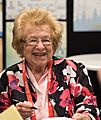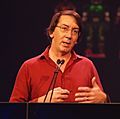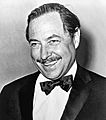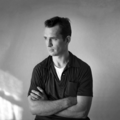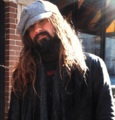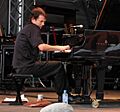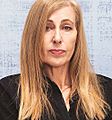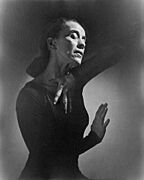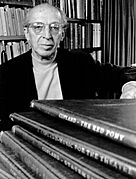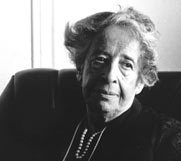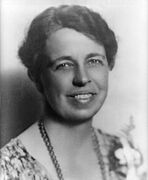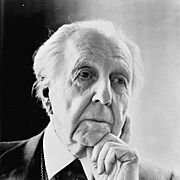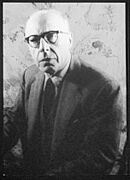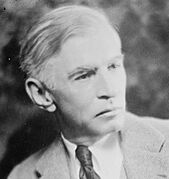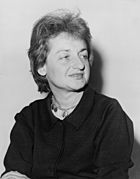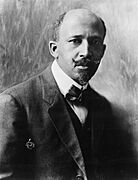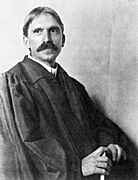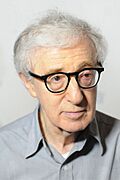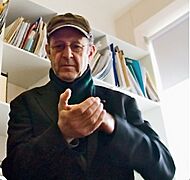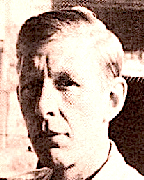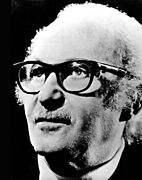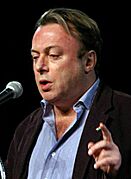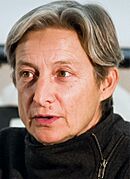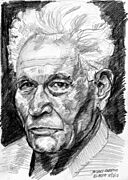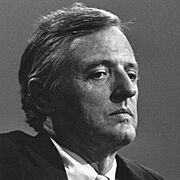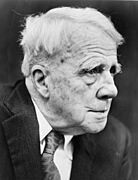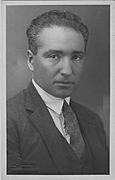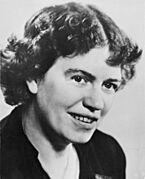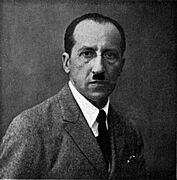The New School facts for kids
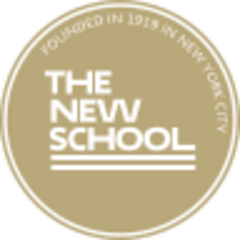
Seal
|
|
|
Former names
|
|
|---|---|
| Motto | To the Living Spirit |
| Type | Private research university |
| Established | 1919 |
| Accreditation | MSCHE |
| Endowment | $393.5 million (2020) |
| President | Donna Shalala (interim) |
| Provost | Renée T. White |
|
Academic staff
|
2,230 |
| Students | 10,186 |
| Undergraduates | 6,836 |
| Postgraduates | 3,138 |
| 212 | |
|
Other students
|
2,857 (continuing education) |
| Location |
,
U.S.
40°44′08.08″N 73°59′49.08″W / 40.7355778°N 73.9969667°W |
| Campus | Urban |
| Colors | White, Black, Parsons Red |
|
Sporting affiliations
|
Unaffiliated, competes against NCAA Division III schools |
| Mascot | Gnarls the Narwhal |
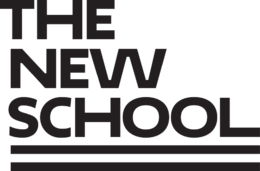 |
|
The New School is a private university in New York City. It started in 1919 as The New School for Social Research. Its main goal was to support new ideas and academic freedom. It became a place for people who thought differently.
Over the years, the university has grown a lot. It now has five main parts. These include the Parsons School of Design, famous for fashion. There's also the Eugene Lang College of Liberal Arts. The College of Performing Arts includes the Mannes School of Music. The original The New School for Social Research is still there. The Schools of Public Engagement are also part of the university.
The New School also has a campus in Paris, called Parsons Paris. It has started or hosted many important groups. These include the World Policy Institute. The Vera List Center for Art and Politics is another example. About 10,000 students attend the university. Most students, over 70%, study creative subjects. These include design, performing arts, and fine arts.
Contents
History of The New School
How the Name Changed
When it first opened in 1919, the university was called The New School for Social Research. It was founded by forward-thinking educators from New York. Many had left Columbia University because they disagreed with some rules.
From 1997 to 2005, it was known as New School University. In 2005, the university and its colleges got new names.
In 1933, The New School created the University in Exile. This program helped professors escaping difficult situations in Europe. In 1934, New York State officially recognized it. Its name changed to the Graduate Faculty of Political and Social Science. In 2005, this part of the university took back its original name. The larger university then became known simply as The New School.
How It Started
The New School for Social Research began in 1919. A group of professors wanted to create a modern, open school. They wanted a place where adults could learn without bias. They aimed to understand the world as it was.
Some founders were famous thinkers. These included economist Alvin Saunders Johnson. Historian Charles A. Beard was also a founder. Other founders were economist Thorstein Veblen and philosopher John Dewey. Many had been professors at Columbia University.
In 1917, Columbia University asked staff to sign a loyalty pledge. This was during World War I. Some professors were fired for not signing. Charles A. Beard resigned from Columbia in protest. His colleague James Harvey Robinson also left in 1919 to join The New School.
The New School wanted to offer serious college-level learning. But it didn't require students to get a degree. It was open to anyone. Today, its adult learning division still works this way.
The first classes were lectures followed by discussions. Smaller groups could also do specific research. In the first semester, 100 courses were offered. Most were about economics and politics. Years later, The New School began to offer traditional degrees. Famous composer John Cage studied here in 1933. He later taught Experimental Composition. His students, like Yoko Ono, were inspired by him.
The University's Motto
The New School's motto is "To the Living Spirit." In 1937, writer Thomas Mann visited. He mentioned a plaque at the University of Heidelberg. It said "be the Living Spirit" but was removed by the Nazis. He suggested The New School adopt this idea. It would show that the "living spirit" could find a home here. Alvin Johnson liked this idea, and it became the university's motto.
The University in Exile
The Graduate Faculty of Political and Social Science started in 1933. It was known as the University in Exile. It helped scholars, many of whom were Jewish. They had lost their jobs or left Europe due to difficult political situations.
Alvin Johnson, the director, founded the University in Exile. He received financial help from Hiram Halle and the Rockefeller Foundation. This program has been a very important part of The New School's history. Famous scholars included psychologists Erich Fromm and Max Wertheimer. Political thinkers Hannah Arendt and Leo Strauss also joined.
In 1934, the University in Exile was officially recognized. Its name changed to the Graduate Faculty of Political and Social Science. In 2005, it was renamed again. It took the original name of the university, The New School for Social Research.
New University in Exile Consortium
In 2018, the New University in Exile Consortium was created. This group includes many colleges worldwide. They host at least one exiled scholar each year. They help these scholars with their studies and provide personal support. Since it started, the Consortium has helped scholars from Afghanistan and Ukraine. This was after the fall of the Afghan government and the Russian invasion of Ukraine.
École Libre des Hautes Études
The New School also helped create the École Libre des Hautes Études. This happened after France was invaded during World War II. This school received official approval from Charles de Gaulle's Free French government. It attracted scholars who taught in French. These included philosopher Jacques Maritain and anthropologist Claude Lévi-Strauss. The École Libre later became a leading research center in Paris. It is now called the École des Hautes Études en Sciences Sociales. The New School still has strong connections with it.
Dramatic Workshop
From 1940 to 1949, The New School had a "Dramatic Workshop." This was an exciting theater program. It was started by German director Erwin Piscator. Famous students included Marlon Brando, Harry Belafonte, and Tony Curtis. Many other well-known actors also studied here.
I attended The New School for Social Research for only a year, but what a year it was. The school and New York itself had become a sanctuary for hundreds of extraordinary European Jews who had fled Germany and other countries before and during World War II, and they were enriching the city's intellectual life with an intensity that has probably never been equaled anywhere during a comparable period of time.
University Presidents
Here are the people who have led The New School as president:
- Alvin Saunders Johnson (1922-1945)
- Bryn J. Hovde (1945-1950)
- Hans Simons (1950-1960)
- Abbott Kaplan (1960)
- Henry David (1961-1963)
- John R. Everett (1964-1982)
- Jonathan Fanton (1982-1999)
- Bob Kerrey (2001-2010)
- David E. Van Zandt (2011-2020)
- Dwight A. McBride (2020-2023)
- Donna Shalala (2023-)
How The New School is Organized
The New School is made up of different colleges. Each college is led by a dean. They have their own rules for scholarships and admissions.
Main Colleges
| College | Founded | Schools or Divisions |
|---|---|---|
| The New School for Social Research | 1919 | |
| College of Performing Arts | 1916 |
|
| Eugene Lang College of Liberal Arts | 1978 | |
| Parsons School of Design | 1896 |
|
| Schools of Public Engagement | 1919 |
|
Academics and Learning
| THES World | 801–1000 |
|---|---|
| USNWR National University | 133 |
| Washington Monthly National University | 298 |
| Forbes | 261 |
|
USNWR graduate school rankings |
|
|---|---|
| Clinical Psychology | 138 |
| Fine Arts | 15 |
| Political Science | 81 |
| Psychology | 167 |
| Public Affairs | 83 |
| Urban Policy | 22 |
| Sociology | 54 |
Unlike many other U.S. universities, Lang College has a "student-directed curriculum." This means students don't have to take general classes. Instead, they can explore different subjects. This helps them find what they are truly interested in. However, performing arts students must choose their major when they enroll.
The university offers 81 different degree programs. There is one teacher for every nine students. Small class sizes mean most classes are like discussions. Eugene Lang College is known for its lively class discussions.
Dual Degree Programs
The university offers several dual degree programs. These let students earn two degrees at once. For example, students can get a Bachelor of Arts and a Bachelor of Fine Arts. This program takes five years. Students get their B.A. from Eugene Lang College. They get their B.F.A. from either Parsons or the School of Jazz and Contemporary Music.
Another option is a Bachelor of Arts and a master's degree. This also takes five years. Lang College students can earn their master's from the New School for Social Research. There's also a Master of Arts Management and Entrepreneurship program. Students can combine this with a Bachelor of Music. Or they can combine it with a Bachelor of Fine Arts in drama or jazz.
Research Centers
The New School has many institutes and research centers. They focus on different areas of study:
- International affairs and global topics
- Philosophy and intellectual culture
- Humanities Action Lab
- Politics, policy, and society
- Art, design, and theory
- Environment
- City and community development
- Center for Attachment Research
- Center for New York City Affairs
- Center for Public Scholarship
The College of Performing Arts is home to The Stone. This is a famous place for experimental music. It hosts 240 concerts every year.
Student Backgrounds
About one-third of New School students come from outside the United States. They represent 112 different countries. U.S. students come from all 50 states. About 43% of U.S. students are people of color. Also, 5% of American students identify as more than one race. Most students, 63%, receive financial help. About 17% of students study abroad before they graduate.
Campus Life
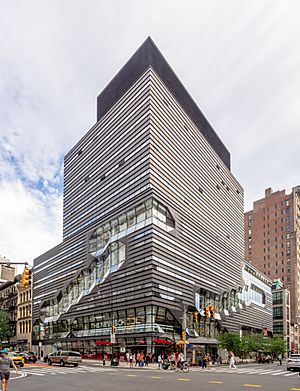
The New School's campus is mostly located near Union Square in Greenwich Village, New York. Some dorms and offices are in other neighborhoods. The College of Performing Arts is in the West Village.
| Building name | Address | Division / Purpose |
|---|---|---|
| 20th Street Residence | 300 west 29th Street | Dormitory |
| 39 W 13th St | 39 W 13th St | Various |
| Administrative Offices | 80 Fifth Avenue 71 Fifth Avenue |
Administration |
| Albert and Vera List Academic Center | 6 East 16th Street | New School for Social Research |
| Alvin Johnson/J. M. Kaplan Hall | 66 West 12th Street | Schools of Public Engagement Offices of President and Provost |
| Arnhold Hall | 55 West 13th Street | College of Performing Arts |
| Eugene Lang College | 65 West 11th Street | Eugene Lang College |
| Eugene Lang College Annex | 64 West 11th Street | Eugene Lang College |
| Fanton Hall | 72 Fifth Avenue | Welcome center, Registrar |
| Loeb Hall | 135 East 12th Street | Dormitory |
| Parsons East | 25 East 13th Street | Parsons School of Design |
| School of Drama | 151 Bank Street | College of Performing Arts |
| Sheila C. Johnson Design Center | 66-68 Fifth Avenue 2 West 13th Street |
Parsons School of Design |
| Stuyvesant Park | 318 East 15th Street | Dormitory |
| University Center | 63 Fifth Avenue | All divisions |
University Center
The New School opened its 16-story University Center in January 2014. It is located at 65 5th Avenue.
The plans for this building were first met with some debate. Students and local residents had concerns. But the plans were changed to address these worries. The building was designed by Skidmore, Owings and Merrill. It is the largest project the university has ever built.
The University Center is a main hub for all students. It has classrooms, new dorms, computer labs, and event spaces. It also includes a cafeteria, a library, and a lecture hall.
Historical Buildings
Several buildings at the university are considered New York City landmarks. One example is the egg-shaped Tishman Auditorium. It was designed by architect Joseph Urban. This auditorium hosts many events each year. These include writer's forums, debates, and performances.
Newer buildings have also won awards. The Sheila Johnson Design Center is one example. It won an award for its design in 2009. This center is a main academic building for Parsons. It also serves as a public art gallery. The New School Welcome Center also won an award in 2010. In October 2019, the university celebrated its 100th birthday. They held a special event called The Festival of New.
Libraries and Art
Libraries
The New School has three library locations in New York City. It also has Archives & Special Collections. In 2009, its libraries held almost 2 million items.
- Alexis Gregory Library for the Performing Arts
- Archives & Special Collections
- University Center Library – for art, design, and technology
- List Center Library – for humanities and social sciences
Art Collection
In 1931, The New School asked two artists to create murals. These were José Clemente Orozco and Thomas Hart Benton. The New School Art Collection began in 1960. It received a grant from the Albert A. List Foundation.
The collection now has about 1,800 works of art. These are from after World War II and include many types of art. Parts of the collection are displayed all over the campus. Famous artists like Andy Warhol, Kara Walker, and Richard Serra have art pieces at The New School.
Student Life
Student Groups
The New School has over 50 recognized student groups. Many of these groups focus on art or helping the community. Some popular groups include The Theatre Collective, which puts on plays. There's also Narwhals on Broadway. Students for a Democratic Society (SDS) is another group. The New School Debate Team competes against other colleges. ReNew School is a group focused on helping the environment.
Sports and Fun
The New School's mascot is Gnarls the Narwhal. Students voted for this mascot in 2012. The athletics logo was designed by a Parsons student.
The sports department started in 2008. Students can play intramural sports at the McBurney YMCA. The school also holds the New School Olympics. They also have a charitable 5K Turkey Trot race.
The Narwhals have several intercollegiate teams:
- Basketball (started 2009)
- Cross Country (started 2010)
- Cycling (started 2013)
- Soccer (started 2013)
- Tennis (started 2014)
- Ultimate Frisbee (started 2014)
The New School Narwhals are an independent school. They are not part of the NCAA. But they often compete against NCAA Division III schools.
Besides sports, the recreation department offers many free fitness classes. These include boxing, dance, HIIT, Pilates, tai chi, yoga, and Zumba. Personal training is also available.
Outdoor adventure trips are offered often. These trips include camping, hiking, and rafting. They have also expanded to include archery, biking, skiing, surfing, and rock climbing.
The department also hosts other fun events. These include the 5K Rabbit Run in April. There's also the Urban Hunt, a scavenger hunt around campus. Club New is a dance party for new students.
Activism and Social Change
The New School has a history of being involved in social issues. It is known for student activism and community involvement. It is a "Periclean University." This means it teaches students to be responsible citizens. The New School is also recognized for social entrepreneurship.
In 2010, New York City recognized The New School. It was praised for having many community service events. The university is also listed in a book about colleges that "make a difference."
Leadership and Student Voices
Bob Kerrey, a former U.S. Senator, became president in 2000. He made some changes to the university. Some people praised him, while others had concerns.
There were times when students and faculty disagreed with the university's leadership. In 2008, many professors voted that they had "no confidence" in the president. Students also held protests. They wanted more study space and other changes. They also asked for the president to resign. After discussions, some of their demands were met.
In 2009, students again protested. They occupied a building for about six hours. The police arrested the students involved. They were then suspended from the school. The president, Bob Kerrey, later announced he would leave office early in 2011. David E. Van Zandt became the new president.
Caring for the Environment
In 2010, The Princeton Review gave the university a high rating for sustainability. It was named one of America's "Green Colleges." The New School has a student group called Renew School that focuses on the environment. The university also has staff dedicated to sustainability.
The New School has signed agreements to reduce its environmental impact. It aims to be very green. The university had one of the lowest carbon footprints per student. Even with new buildings, it continues to work on being environmentally friendly.
Working Together
Workers at The New School are part of different unions. These include student workers, office staff, and librarians. Part-time faculty also have a union.
In 2003, part-time faculty started to form a union. After some disagreements, the university recognized their union. In 2005, the union negotiated its first contract. This helped part-time faculty get better conditions.
In November 2022, the part-time faculty union voted to go on strike. This happened after months of talks about a new contract. The strike began on November 16. The university announced it would not pay striking workers. This led to more disagreements. However, the university later paid all striking workers.
The strike ended on December 10. With help from a mediator, the union and university agreed on a new contract. This contract increased pay for part-time faculty. It also paid them for work outside the classroom. More union members also became eligible for health insurance.
Notable People
The New School has over 56,000 living alumni. Its graduates live in 112 countries around the world.
Famous Alumni
-
Hage Geingob
President of Namibia -
Will Wright
Creator of The Sims -
Tennessee Williams
Award-winning playwright -
James Baldwin
Writer and activist -
William Styron
Author -
Jamaica Kincaid
Writer -
Rod Steiger
Actor -
Robert Glasper
Musician -
Jack Kerouac
Novelist and poet -
Harry Belafonte
Musician and activist -
Sufjan Stevens
Musician -
Ani DiFranco
Musician -
Walter Matthau
Actor -
Murray Perahia
Pianist and conductor -
Kevin Smith
Filmmaker and actor -
Joel Schumacher
Filmmaker -
Burt Bacharach
Composer -
Bradley Cooper
Actor -
Jesse Eisenberg
Actor -
Bea Arthur
Actress -
Elaine Stritch
Actress -
Shelley Winters
Actress -
Tony Curtis
Actor -
Bill Evans
Musician -
Paul Dano
Actor -
Jonah Hill, Actor
-
Marc Jacobs
Fashion designer -
Marlon Brando
Actor -
Tom Ford
Fashion designer and filmmaker -
Donna Karan
Fashion designer and founder of DKNY -
Edward Hopper
Realist painter -
Jasper Johns
Abstract expressionist painter -
Norman Rockwell
Artist
Famous Faculty
-
Martha Graham
Modern dancer and choreographer -
Aaron Copland
Composer and conductor -
Hannah Arendt
Philosopher and political theorist -
Eleanor Roosevelt
First Lady of the United States -
Frank Lloyd Wright
Architect -
John Maynard Keynes
Economist -
George Szell
Conductor -
Betty Friedan
Feminist theorist -
Stella Adler
Acting teacher -
W.E.B. Du Bois
Sociologist, writer, and civil rights activist -
John Dewey
Philosopher -
Woody Allen
Filmmaker -
Steve Reich
Composer -
W.H. Auden
Poet -
Lee Strasberg
Acting teacher -
Franco Modigliani
Nobel Prize-winning economist -
Christopher Hitchens
Writer and speaker -
John Cage
Composer -
Judith Butler
Philosopher and feminist -
Jacques Derrida
Philosopher -
William F. Buckley, Jr.
Conservative author and commentator -
Robert Frost
Poet -
Wilhelm Reich
Psychologist -
Ruth Benedict
Anthropologist -
Margaret Mead
Anthropologist -
Piet Mondrian
Painter
See also
 In Spanish: The New School para niños
In Spanish: The New School para niños
- Education in New York City
- Free University of New York
- National Book Award
- New York Foundation
- New York Intellectuals
- Project Pericles




